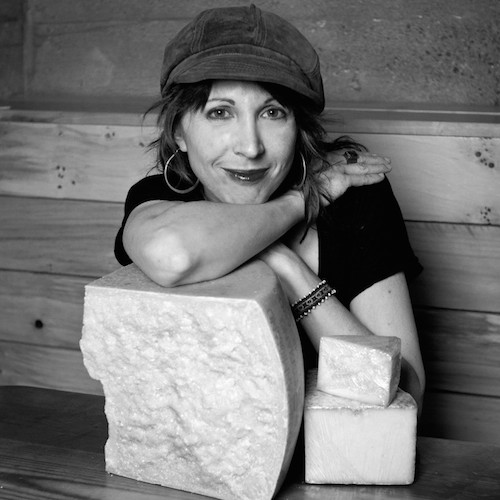
I have a broken heart.
I departed from Nepal, where I was researching a story, on Friday, April 24, exactly 24 hours before the earthquake. Because I was in transit to my current location in Laos and not checking email, I didn’t find out until the night of the tragedy. Needless to say, it’s been messing with my head ever since, as I spent my last days in Kathmandu and the Kathmandu Valley, epicenter of the quake.
I was going to write about this entertaining, über-Nepali cheese delivery experience anyway, but given the circumstances, I also wanted to use it as a way to draw attention to the urgent need for relief efforts in the form of donations.
A charity was just established by my former client, Mountain Madness, a travel company located in Seattle. One of their guides, Deana Zabaldo, was leading a group of clients to Everest Base Camp when the quake hit. They are all safe, but the families of their Sherpas (and local yak cheesemakers, who live at the higher altitudes) are homeless and displaced. To donate, click here. The Red Cross, the UN World Food Program and Doctors Without Border—among many other organizations—are also soliciting donations for the relief effort. Visit the Associated Press for more ways to help.
Consider this a good-natured love letter to Nepal, a country that showed me so much graciousness, humor, hospitality, and great times over the past two weeks. Please get well soon.
As a former cheesemonger, marketing director for a cheese company, and educator, I’ve done my share of schlepping dairy products. While packing cheese into a cooler requires some organizational skills, it’s not exactly rocket science. This, of course, excludes the time I accidentally left an empty box from a shipment of washed rinds (read: stinky cheeses) in my car overnight during a heat wave. I spent nearly 15 minutes the following morning crawling underneath my car and peering into the fan belt and engine block, trying to find the dead animal causing the unholy stench, before I caught on to my error.
A few days ago, I had the opportunity to sit sort-of shotgun on a cheese delivery in the Kathmandu Valley. I was working on a Nepal cheese feature for culture: the word on cheese (look for it in the Fall issue pending circumstances; I’m still trying to find out if all of the cheesemakers I interviewed are okay), and was on my way to the Himalayan French Cheese’s creamery (owned by entrepreneurial genius Frenchman Francois Driard). It’s located eight kilometers north of Kathmandu, epicenter of the quake. Accompanying me was Francois’ Nepali business partner and a driver, who was later going to drop me at Francois’s sister’s farmstay on the other side of Kathmandu.
Let me explain something about driving in Nepal (beside the fact it’s done on the left). It’s terrifying. I had just come off of a 17-hour ride in a clapped-out Indian bus (I suspect Uttar Pradesh traded it to Nepal for a plate of dal bhat), traveling across the Terai (Eastern Plains) back to Kathmandu after a 12-day trek/whitewater trip on the Tamur River. Tip: Xanax is also essential for developing-nation, long-haul bus rides, especially in cultures where the main objective is to haul ass whilst playing chicken with oncoming semi’s and other buses on high-mountain passes with blind curves. What fun!
I digress. The point is, when you have a car the size of a Maruti Suzuki—essentially a SPAM can with wheels—there’s not much room to spare. With three passengers, my 40-pound backpack, a loaded daypack, and what turned out to be over 300 pounds of cheese (from hefty wheels of lusty Bellecote—Francois’ signature creation—to dozens of wheels of tomme, Reblochon, camembert, St. Marcellin, a couple of trial bries, and buckets of yogurt, cream cheese, and ricotta—there wasn’t much room to spare). It was also hellishly hot and humid.
After the cranky driver tied my backpack to the roof of the car with a piece of twine, I folded myself into the back seat (which was broken, so it flipped forward at every application of the brakes, which in Nepal, like the use of the horn, is constant). Behind me were two loaded coolers and boxes; beside me was a cooler and a weathered cardboard box of tommes that split at the seam the very first time our driver slammed on the brakes to avoid an oncoming motorbike.
Thus, I spent the next 90 minutes with my left arm awkwardly bracing the torn box to prevent the pristine tommes from flying through the windshield, and having 175 pounds or so of Bellecotes slamming into my back and effectively bending me in half every time we braked. Because Kathmandu’s pollution (blame the inversion layer) is so epic, most locals wear face masks; I developed what I affectionately called KTM black lung on day two of my arrival. Thus, I was forced to wear a scarf around my nose and mouth to avoid carbon monoxide poisoning whilst holding down the dairy fort, so to speak.
Eventually, after bumping (shock absorbers? Not in Nepal!) through back alleys and potholes big enough to swallow a Nepali-sized cow, we made it to the Kathmandu office of the cheese company, from which our precious cargo would be distributed to nearby restaurants and hotels.
All in a day’s work for an expat cheesemaker in Nepal, and a terrifically entertaining cultural experience for me. My thoughts are with all of my new Nepali friends and cheesemakers; thank you for an incredible trip and for showing me, in the words of chhurpi maker Mitra Kala Khanal, that, “In Nepal, cheese is life.”









